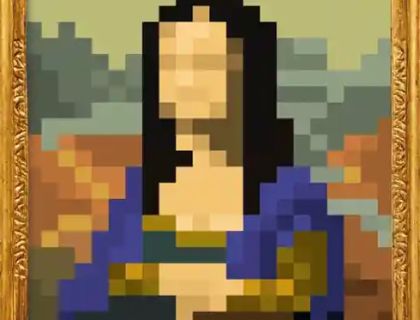NFTs and the Universe

The authenticity and unique value of Non-Fungible Tokens (NFTs) is certified by the blockchain authentication mechanism. Many voices have raised objections to this craze, calling it foolish for many reasons. One of the most serious objections is environmental, as the certification of uniqueness itself consumes an immense amount of energy, at a time when politicians, scientists, and engineers try desperately to reduce our energy dependence. Comparisons between the energy required to certify a single piece of digital art and the annual energy consumption of an entire village have been made. But one argument has been missing, which lays bare the utter foolishness of art valuation for NFTs.
First let’s look at the number of true colors in a pixel. “Most color images from digital cameras have 8-bits per channel and so they can use a total of eight 0’s and 1’s. This allows for 28 or 256 different combinations—translating into 256 different intensity values for each primary color. When all three primary colors are combined at each pixel, this allows for as many as 28*3 or 16,777,216 different colors, or “true color.” This is referred to as 24 bits per pixel since each pixel is composed of three 8-bit color channels. The number of colors available for any X-bit image is just 2X if X refers to the bits per pixel and 23X if X refers to the bits per channel.” (Wikipedia)
So now let’s look at a very minimal picture of 100 x 100 for the sake of argument. There are 16,777,21610,000 possible pictures that can be made with the given 3 x 8 bit palette. Any conceivable picture and, in particular, any conceivable NFT is contained in it. Let us now pick one, let’s say it has been made by John Snow, a famous artist. It is distinguished from all the others by the artist’s 10,000 unique choices for the color in every pixel.
It can be easily seen that there are (at least) as many as 330,000 pictures that are visually indistinguishable from John Snow’s masterwork. The recipe for creating all these pictures is easy: take the least significant bit of each color channel and generate all combinations where you either flip it from 0 to 1 or from 1 to 0, or leave it unchanged as the third option.
Now this number of indistinguishable combinations is interesting since the upper bound for the number of atoms in the universe has been estimated as 1082, or about 3164, give or take. That means that even for a 100 x 100 picture – which is modest by comparison with digital pictures on the market — the number of visually indistinguishable versions is many powers of magnitude larger than the number of atoms in the universe.
This entry was posted in Blog and tagged atoms in the universe, blockchain, global warming, NFTs. Bookmark the permalink.

Leave a Reply